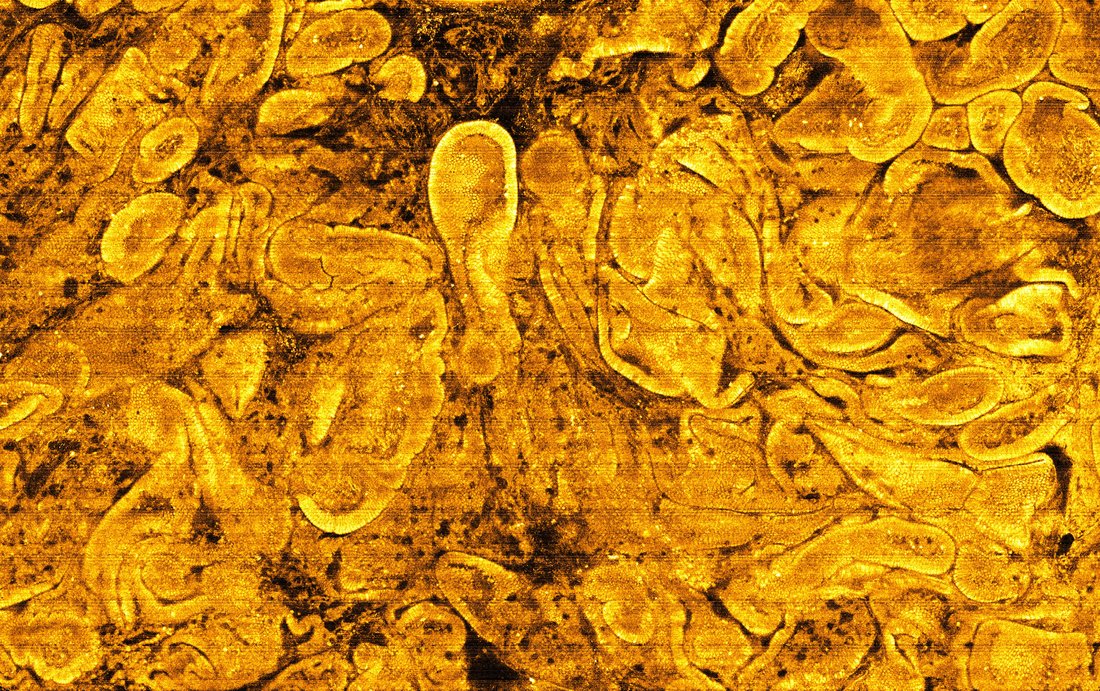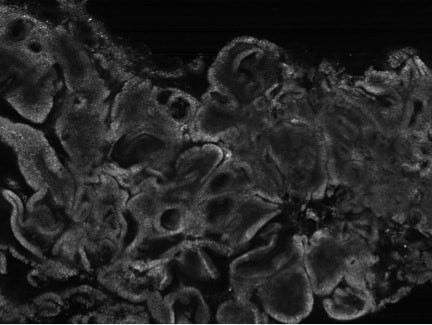Coronary Artery Disease
The importance of understanding coronary artery disease cannot be overstated; it is the number one cause of death in the US. Each year half a million Americans die from heart attacks. An equal number survive with considerable and permanent damage to their heart. Coronary artery disease is caused by cells that are too small to visualize using modern medical imaging technologies. We have developed multiple new technologies that enable the visualization of structural details, fluorescent and absorbing molecules, and individual cells in the coronaries of living patients. Our lab’s work with with advanced coronary imaging will change how we study, diagnose, and treat atherosclerosis, allowing clinicians to intervene before a heart attack occurs.
Eosinophilic Esophagitis
Eosinophilic esophagitis (EoE) is a common food allergy that is characterized by infiltration of eosinophils in the esophagus. EoE causes in symptoms such as nausea, vomiting, heartburn, food impactions, and difficulty swallowing. Current standard of care can require many sedated endoscopies with biopsies to diagnose and confirm elimination of the eosinophils following therapy. These procedures are expensive, time consuming, and can be difficult for patients to tolerate. We have recently developed a swallowable SECM capsule that is capable of identifying individual eosinophils in the esophagus without requiring sedation or use of contrast agents. This device has the potential to be a reliable and affordable tool for the diagnosis and follow up care of EoE patients.
Barrett’s Esophagus
Barrett¹s esophagus (BE) is a condition that is associated with chronic gastroesophageal reflux disease. Early detection of BE is important because it can progress to esophageal adenocarcinoma, a cancer with a high mortality rate. However, when BE is found early it can be monitored to prevent the occurrence of cancer. We have invented a procedure for imaging the entire esophagus with OCT. The images are then used to guide biopsy to evaluate the most severely diseased regions. The Tearney Lab has also developed a tethered capsule that is capable of microscopic imaging a patient¹s GI tract in a simple, low risk, and inexpensive procedure. A patient swallows the capsule and doctors immediately see microscopic images of the digestive tract that are detailed enough to avoid the need for biopsies. This technology is currently being tested in the primary care setting to show the efficacy of capsule screening for Barrett’s.
Cystic Fibrosis
The Tearney Lab’s Micro Optical Coherence Tomography (μOCT) technology is being used to help researchers and clinicians better understand and treat cystic fibrosis (CF). CF is one of the most common lethal genetic disorders in the United States. With cystic fibrosis the basic mucus clearance mechanism of the lungs does not work well. The inability to clear the lungs of mucus causes chronic lung infections that may lead to an early death. Researchers and clinicians still do not know exactly why the mucus clearance mechanism of the lungs fails in CF patients. μOCT can directly image this mechanism in action, including the microscopic cilia responsible for driving mucus flow, helping to answer previously unanswerable questions about cystic fibrosis and evaluate treatment methods meant to restore mucus clearance in CF patients.
Celiac Disease
Celiac disease is an autoimmune disorder of the small intestine caused by ingestion of gluten that afflicts roughly 1% of the population of the United States. The only known treatment for Celiac disease is a strict gluten-free diet. Traditionally, the diagnosis of celiac disease necessitates endoscopic biopsy, which has a high rate of false negative results. Less invasive SECM and high-resolution OCT tethered capsule microscopes have the potential to diagnose the disease more accurately.






















